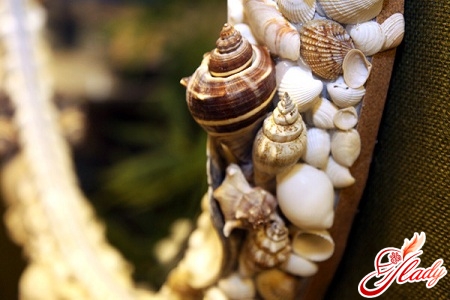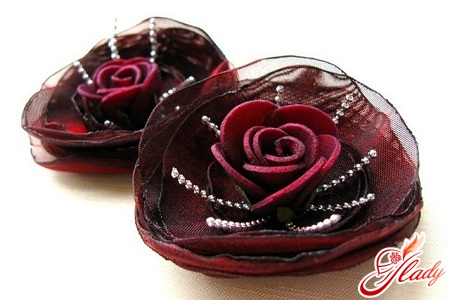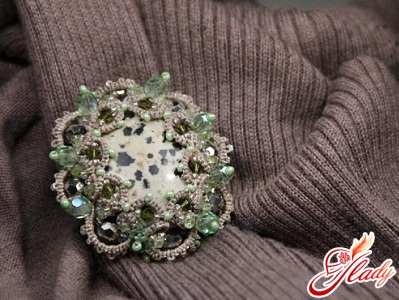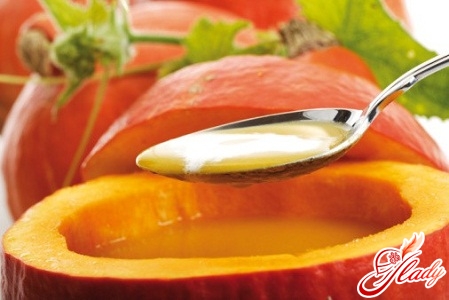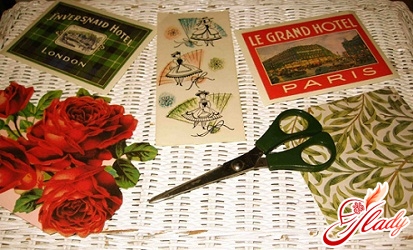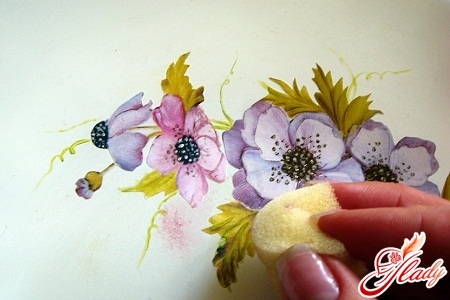 Decoupage: the technique of decorating with the help of appliqués, which imitates art painting. According to some sources, the Chinese peasants invented it in the 12th century. According to other sources, the history of decoupage began in the Middle Ages. The furniture in Germany in the 15th century began to decorate with pictures. In this way, furniture masters simulated costly eastern incrustation. There is also an assertion that decoupage was born in Eastern Siberia. And even that decoupage was used by the ancient nomads to decorate the graves. The name itself is of French origin. Decoupage was unusually fashionable at the courts of the French kings. In Italy, this art was called Arte Povera (art of the poor). In England, the technique of decoupage became known in the time of Queen Victoria. From there, as early as the beginning of the 20th century, it also penetrated to America (as a hobby of fashion). To us, fashion for decoupage came just recently - at the beginning of this century. And every year this art conquers ever stronger positions in the ranks of famous techniques of needlework. Why? Decoupage is a creative and very exciting activity. It allows you to spend time pleasantly, and create something unusual for decorating the house. And so today has become a decoupage technique mainly for women's needlework. A special attraction of decoupage is that even those who do not know how to draw can use ready-made drawings to imitate artistic painting. What is the essence of such an accessible technique?
Decoupage: the technique of decorating with the help of appliqués, which imitates art painting. According to some sources, the Chinese peasants invented it in the 12th century. According to other sources, the history of decoupage began in the Middle Ages. The furniture in Germany in the 15th century began to decorate with pictures. In this way, furniture masters simulated costly eastern incrustation. There is also an assertion that decoupage was born in Eastern Siberia. And even that decoupage was used by the ancient nomads to decorate the graves. The name itself is of French origin. Decoupage was unusually fashionable at the courts of the French kings. In Italy, this art was called Arte Povera (art of the poor). In England, the technique of decoupage became known in the time of Queen Victoria. From there, as early as the beginning of the 20th century, it also penetrated to America (as a hobby of fashion). To us, fashion for decoupage came just recently - at the beginning of this century. And every year this art conquers ever stronger positions in the ranks of famous techniques of needlework. Why? Decoupage is a creative and very exciting activity. It allows you to spend time pleasantly, and create something unusual for decorating the house. And so today has become a decoupage technique mainly for women's needlework. A special attraction of decoupage is that even those who do not know how to draw can use ready-made drawings to imitate artistic painting. What is the essence of such an accessible technique?
What is the essence of technology?
The essence of the process is to decorate someobject, gluing pieces of paper, leather or other materials to it. The main task of the master is to remove the boundaries between the decorated surface and the pasted pattern, creating the illusion of painting or inlaying. In general, the decoupage process is as follows.
Everything is simple and clear. But not really. In this technique, there are their own styles, their own techniques. Every craftswoman has her secrets. The answer to the question of simple and effective ways of decorating will be precisely the technique of decoupage: how to make the ordinary unusual, and unattractive beautiful. 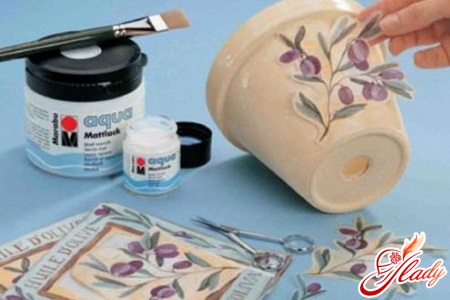
Styles and effects of decoupage
In decoupage, as in any other kind of arts and crafts has its own styles. The most popular of them are:
- shebbie-chic,
- simplicity,
- Provence,
- ethno,
- Victorian style.
Stylization in decoupage is achieved with the help ofauxiliary effects. Craquelure is a cracking effect. It is used for visual aging of things. With the help of craquelure create the image of an ancient thing. The effect of abrasion. It recreates individual frayed areas of the surface. Used for the style of the shebbie-chic. He imitates a thing with a rich history and a long life. Style assumes the presence of white and pink tones and sentimental motifs. Patina (or bitumen) gives things a kind of tarnished gold. It is used for gilding surfaces. Shadows are used for the softness of decoupage and masking the boundaries of the picture. Shadows are applied with a dry brush pastel or paints.
Objects decoupage decoration
The most grateful material for decoupage is wood. And therefore the most common items of decoupage decoration - wooden furniture and interior items: cutting boards, housekeepers, boxes, chests of drawers, benches, shelves, tables. A fragile, but still popular material - glass. Working with glass requires special skill. Most often decoupage is used to make gift bottles and plates. But in this technique can be decorated and ordinary dishes, and glass doors or photo frames. Plastic dishes and furniture (as well as other items) can also be decorated with decoupage. Suitable for this technique and other surfaces: fabric, metal, leather, candles.
Decoupage motives
As a motive for decoupage use anydrawings. The most famous material is napkins for decoupage. It is due to their extensive use of decoupage was called napkin technique. Napkins for blending are thinner and brighter than regular serving paper napkins. Although this statement is very controversial. Napkins for the table sometimes do not yield to the decoupage napkins neither the juiciness of colors, nor the originality of the drawing. The difficulty in using napkins is their subtlety. Because of its density, the napkins are easily torn, collected in creases and creases. Dekupazhnye cards are paper sheets with a picture. Their advantage (as well as a disadvantage) in front of napkins is the density of the paper. Through the drawing of the map, the surface of the decorated object does not appear. But to achieve invisibility of the boundary of the picture is much more difficult. In addition to classic decoupage cards and napkins for applications, you can use any other drawings: postcards, photographs, clippings from magazines. The main thing is to correctly process the picture. Usually, with a postcard or photo, carefully remove the layers of paper and leave only a thin film with a pattern. It is used for decoupage.
Tools and materials
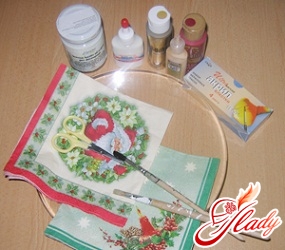 The main tools of decoupage techniques arescissors, glue, primer, brushes, paints, lacquer and (by itself) napkins. Scissors are used for what. But some craftsmen recommend the decoupage motive not to cut, but to pluck. So the scissors may not be needed. Soil is used to paint the decorated surface in white. This allows you to save the colors of the decoupage motif. Adhesive decoupage pattern is attached to the work surface. In addition to special adhesives in decoupage use PVA glue, clerical or building glue. Brushes will be needed to apply glue, paint small parts, create effects and apply varnish. For decoupage, thin and wide brushes made of natural and synthetic materials are used. Paints are needed for toning the working surface and drawing details. Paints are also used to apply various effects. Operating procedure:
The main tools of decoupage techniques arescissors, glue, primer, brushes, paints, lacquer and (by itself) napkins. Scissors are used for what. But some craftsmen recommend the decoupage motive not to cut, but to pluck. So the scissors may not be needed. Soil is used to paint the decorated surface in white. This allows you to save the colors of the decoupage motif. Adhesive decoupage pattern is attached to the work surface. In addition to special adhesives in decoupage use PVA glue, clerical or building glue. Brushes will be needed to apply glue, paint small parts, create effects and apply varnish. For decoupage, thin and wide brushes made of natural and synthetic materials are used. Paints are needed for toning the working surface and drawing details. Paints are also used to apply various effects. Operating procedure:
The main rule of decoupage: "more quietly you will go further". This technique does not tolerate fuss and haste. And, as in performance, and in training.
How can this be learned?
Secrets of the skill of decoupage decorationso many that to learn - not to re-learn, read - do not reread, watch - do not reconsider. And, nevertheless, to master the technique of decoupage is possible for everyone. The surest way is decoupage courses. Agree that direct communication with the teacher will be the most effective training. So sign up for such courses and go through the training under the guidance of the master. If this is not possible, then there are other options. Master classes. There are a lot of video lessons and step-by-step photoinstructions on the Internet. Such lessons can be quite enough for mastering the technique of decoupage. Special forums of needlewomen will also prove to be useful. And, finally, special materials on the Internet, magazines and books are a great help in the process of self-education. Remember only that Moscow and that was not immediately built. Experience and skill come with time. Begin the first steps in decoupage with simple objects. And, gaining experience, you can even a shoebox to turn a refined casket or a forged antique chest. And all this with the help of tissue technology. We advise you to read:




